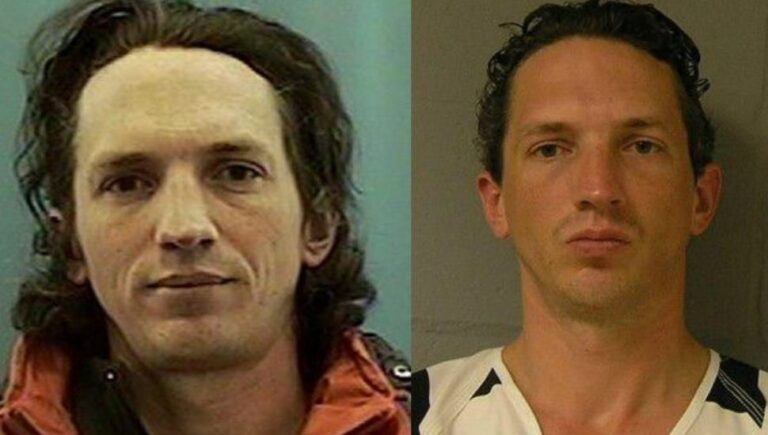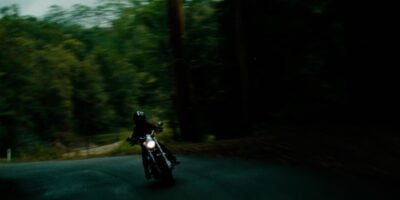February 1, 2012, began like any other day at work for 18-year-old Samantha Koenig, but it ended in unspeakable tragedy.
Finishing up her shift at the Common Grounds coffee stand in downtown Anchorage, Alaska, the young barista was approached by a man wearing a ski mask who ordered coffee – a man who would later be named as Israel Keyes.
After Samantha handed him the order, Keyes pulled out a gun and demanded money, and the terrified teen quickly complied.
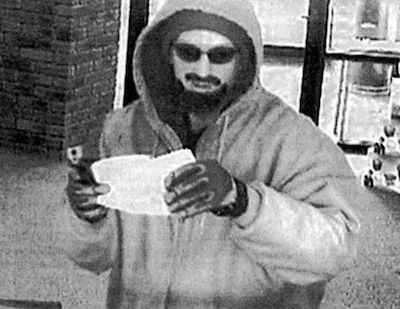
Forcing himself inside the stand, Keyes tied the young woman’s hands together with zip ties before forcing her into his white Ford Focus, where she tried – and failed – to escape the abductor, who held a gun to her head and said he would kill her if she tried again.
Driving around town with Samantha still bound in the vehicle, Keyes explained to the terrified teen that this was simply a kidnapping for ransom and that if she cooperated, she’d be returned to her family unharmed.
Keyes kept Samantha alive for several hours and even drove back to her coffee stand to retrieve her mobile phone. He then used it to send a fake text message to her boyfriend, who was due to pick her up after her shift.
The text read: “Hey, I’m spending a couple of days with friends, let me dad know.”
Keyes took Samantha to his property, where he tied her up in a shed. He turned his radio up so no one could hear her screams and pleas for help.
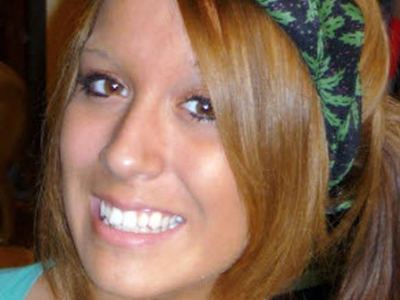
After demanding Samantha’s address, Keyes made his way to retrieve her ATM card from her boyfriend’s truck.
In a gut-wrenching twist, while stealing the debit card, Keyes was confronted by Samantha’s boyfriend – who was already on edge after discovering Koenig was not at work when he arrived to pick her up as well as having received the strange text message from her phone earlier, which had, in fact, been sent by Keyes.
Thinking he was a random burglar attempting to break into his car, Samantha’s boyfriend ran inside to get help, while Keyes fled.
Returning to his property, Keyes poured himself a glass of wine as he returned to his shed and raped a sobbing Samantha.
He then strangled her to death.
Keyes returned inside, packed for a pre-planned cruise in New Orleans, woke his daughter for school, and left for the airport.
Returning to Anchorage on February 17, 2012, Keyes began preparing a ransom note, but first, he decided to remove Samantha’s body from the cupboard.
He applied makeup to Samantha’s face – frozen and lifeless – before unsettlingly sewing her eyes open with fishing line to give her the appearance of being alive. He then took a Polaroid of her “holding” up that day’s newspaper.
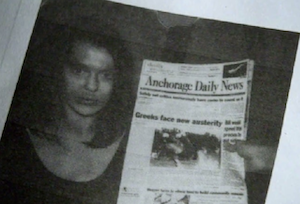
Keyes typed a note demanding $30,000, and he left this – as well as the photograph of Samantha staged to look alive – in a park under a memorial flyer of a dog named ‘Albert’, before using Samantha’s phone to text her boyfriend.

A few days later, Keyes drove to Matanuska Lake, dismembered her body, cut a hole in the ice and dumped her remains in the lake.
At the same time, Samantha’s father, James Koenig – believing his daughter was still alive after seeing the sickening photograph – was depositing the ransom money into Keyes’ account, with the $30,000 having been generously donated by members of the community.
As he had instructed her family to deposit the money into her debit account, authorities were able to determine that the perpetrator was driving a white Ford Focus.
Keyes was then being pulled over for a traffic stop, where authorities found dye-stained bills from a bank robbery, a ski mask, a gun – and Samantha’s phone and debit card.
Keyes was quickly arrested.

Israel Keyes is all your worst fears personified into one of the 21st century’s most terrifying serial killers, and as close to a real-life horror movie villain as one could get.
If he hadn’t become complacent and killed Samantha Koenig in his hometown on that fateful day, authorities agree it’s very likely he may never have been caught at all.
Not only did he have a confirmed murder count of three people (with investigators believing there are at least eight other victims), but unlike some of history’s most feared killers, such as Son of Sam, BTK, and Jeffrey Dahmer, Keyes didn’t target specific types of victims – or even ones in his own area, aside from Samanta, his last victim.
Following the arrest, he admitted to abducting Samantha Koenig from the coffee stand. He would later give police more details – though on the condition that they made one promise; keep everything out of the press.
The reason? He didn’t want his young daughter to read about what he had done to Samantha.
“I’ll tell you everything you want to know. I’ll give it blow by blow if you want. I have lots more stories to tell,” he told police.
It soon dawned on authorities that they weren’t dealing with just a murderer – they were with one of the coldest, most methodical serial killers of all time.
Victims
It quickly became evident that there were many more murder victims than just Samantha Koenig. The first, according to Keyes admission to police, took place in Washington state in the late 1990s.
He told authorities that he had killed at least seven others around the country, though it’s believed the number of victims killed by Keyes stands at 11 people — with the only other names revealed (besides Samantha Koenig’s) being missing married Vermont couple Bill and Lorraine Currier.
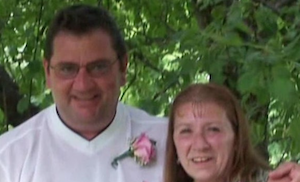
Keyes reportedly broke into the Curriers’ home on the night of June 8th, 2011, instigating what he dubbed a “blitz attack” on the pair, cutting their phone line before entering their home while wearing a headlamp and tying them up before driving them to an abandoned farmhouse.
He shot Bill Currier in the basement with a .22-caliber 10/22 Ruger Charger, and sexually assaulted and strangled Lorraine Currier. Their bodies were never found.
“It is clear from the facts of the case that, though confronted with death, Bill and Lorraine showed extraordinary bravery and extreme dedication and love for one another,” Chittenden County State’s Attorney T.J. Donovan said of the slain couple. “They fought to the end.”
Keyes would later admit that two years prior to the Curriers’ deaths, he hid a “murder kit” which contained a handgun, silencers, ligatures, ammunition and garbage bags, near their home, later using the same kit to kill them.
Modus Operandi
Keyes planned murders ahead of time and took extreme caution to avoid detection. In contrast to most serial killers – which made discovering his crimes far more difficult – Keyes did not have a specific victim profile, saying he killed both men and women, but claimed that children and parents were off-limits.
He killed far from home, and never in the same area twice. During these trips, he would pay only cash and turn off his mobile phone, and had no connection whatsoever to any of his victims.

Once he decided on a victim, he would bury a “murder kit” in the targeted area — as he did prior to the Currier murders. His murders kits have been found in Alaska and New York, but he admitted to having others in Washington, Wyoming, Texas and possibly Arizona.
Keyes had previously revealed he admired fellow killer Ted Bundy, telling investigators he “saw himself” in the notorious murderer. However, he labelled fellow serial killer Dennis Rader, aka BTK, a “wimp,” for professing remorse for his killings.
Anchorage homicide Detective Monique Doll said of Keyes, “[he] didn’t kidnap and kill people because he was crazy. He didn’t kidnap and kill people because his deity told him to or because he had a bad childhood.”
“Israel Keyes did this because he got an immense amount of enjoyment out of it, much like an addict gets an immense amount of enjoyment out of drugs. In a way, he was an addict, and he was addicted to the feeling that he got when he was doing this.”
When asked by investigators why he committed his crimes, Keyes simply replied, “Why not?”
Death
On December 2, 2012, while being held in jail at the Anchorage Correctional Complex, Keyes took his own life.
Under his body was a rambling letter that was later called a “creepy” ode to murder, which offered no clues as to the identities of his unnamed victims, but rather described them as “pretty, captive butterflies.”
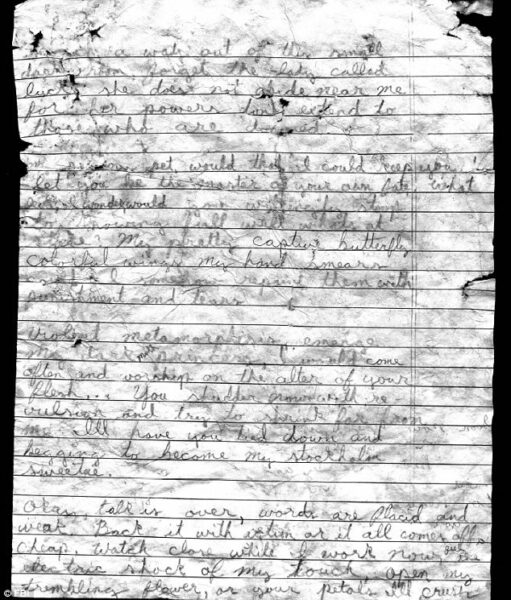
Another snippet read, “Your face framed in dark curls like a portrait, the sun shone through highlights of red. What colour I wonder, and how straight will it turn plastered back with the sweat of your blood.”
On December 10, 2012, Keyes’ mother, Heidi, and four of his sisters attended a small funeral service for Keyes in Deer Park, Washington.
The pastor, Jake Gardner, opened the service by saying, “He is not in a better place,” he began.
“He’s in a place of eternal torment.”
































